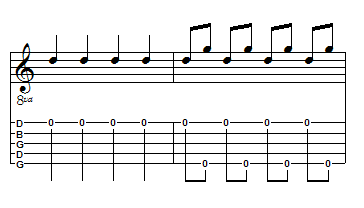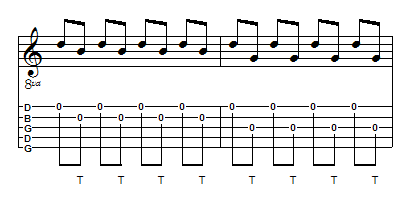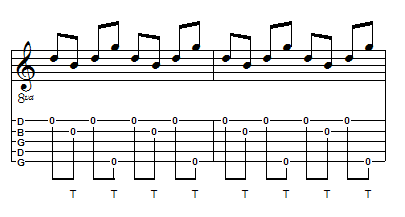
While the terms "double thumbing" and "drop thumbing" sometimes means different things to different people, we shall define them thusly:
Double Thumbing: Picking a string with the right thumb after two or more consecutive beats
Drop Thumbing: Using the right thumb to pick a string other than the 5th string either on or off a beat
When we started out, you'll recall that we wanted to get the thumb stopping against the 5th string. If you sound it each time, you are already "double thumbing." If you make the same motion and stop it against some string other than the 5th string, you are "drop thumbing."
As you may have noticed in the videos, sometimes you can hear the 5th string sound, even when it's only being used as a "thumb-stopper." The 5th string can be overwhelming, so we want to play it gently and judiciously, so even when we indicate its use in tablature, please remember that if it's off the beat it should be played quietly, if at all--please feel free always to leave out an off-beat 5th string note!
Let's look at the tab showing the 5th string being used for double thumbing:

Notice in the video that the difference in the thumb is in the "tweaking" of the 5th string as my hand lifts back up for the next downstroke.
The same motion is used to pick a string other than the 5th (hereinafter referred to as an "inside" string), i.e., as the hand travels down on the beat, the thumb follows behind and lands on the string to be played. Notice that we do want to hear this note, so the thumb tweaks it pretty well as the hand lifts back upwards:

We don't often play inside strings so frequently (though it does happen); instead, a much more common occurrence is the following, commonly used for rhythmic effect..

Another commonly heard melodic use is as follows. Notice how the thumb on the 5th string is deemphasized, while the 2nd string is played as a melody note:
